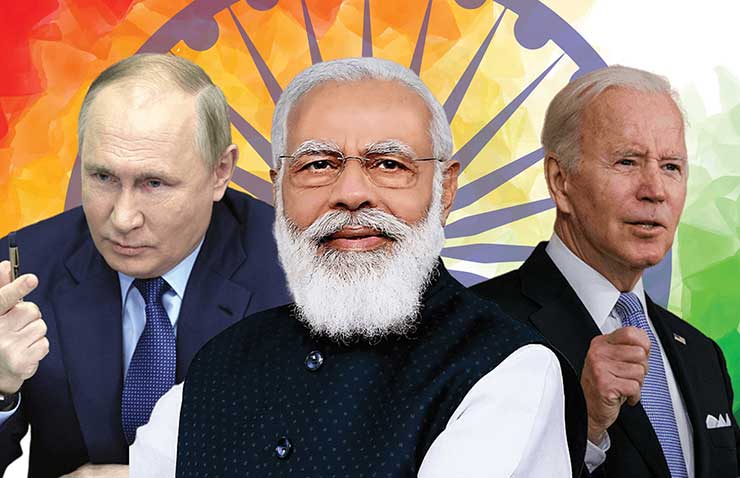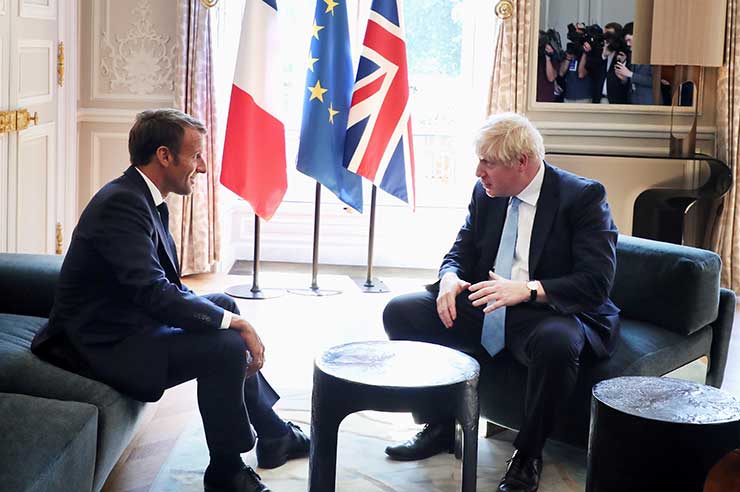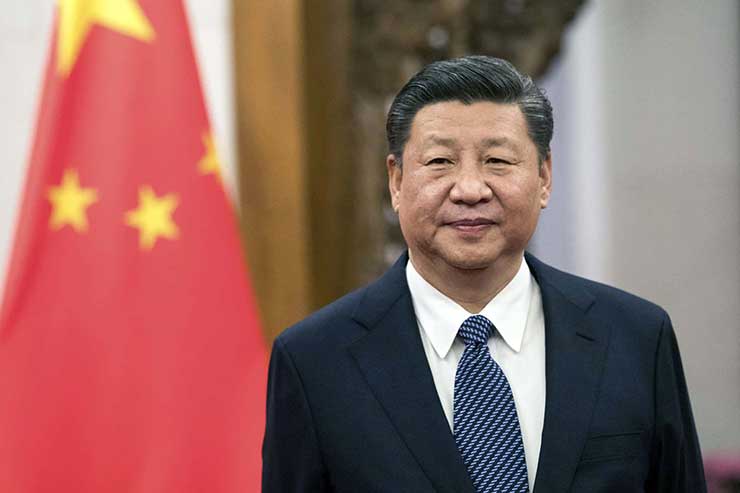
India has effectively conveyed to the West that it will continue to adopt strategic autonomy including in terms of security. The US has grudgingly understood this and scholars of American think tanks are acknowledging somewhat woefully that India is for multi-polarity. But one should expect continued attempts by the prodigal bad boys of the West to dent India’s resolve despite knowing these would be quite useless. It is naive for the West to expect that India will break or dilute its ties with Russia just because they have formed an Anglo-Saxon front against Russia in the vain hope of establishing a US-led unipolar world.
Moreover, the zero-sum game to ‘kill’ a country like Russia that is supplying to the world not only oil and gas but also minerals, metals, wheat, fertilizers, and uranium for America’s nuclear power reactors, indicates a geriatric plan that can hardly succeed especially when western energy voids cannot be filled without Russia. India has demonstrated that it will continue its ties with Russia which are separate from the Indo-US Global Strategic Partnership. The US also knows that India’s role in the Indo-Pacific is vital given the China threat. Moreover, the US has not been able to expand the Quad.
India has never believed in a unipolar world and exercises independent foreign and security policies that allow participation in several bilateral, regional and multilateral networks, institutions and forums. Having said that, it is time for India to exercise economic autonomy, especially in terms of energy, given that the US-led unilateral western sanctions against Russia have impacted the economies of many countries including that of India.
In this context, following are relevant: the US is not following its own embargo against Russian oil and continues to import crude oil from Russia; the EU also continues to import oil and gas from Russia worth USD1.1 billion on daily basis; Japan is consuming 60 percent energy from Russia’s Sakhalin 2, and; the US is actively pursuing obtaining oil from Iran and Venezuela though both countries are under US sanctions for the past several years.
China has benefited maximum from cheap Iranian oil. In September 2021, the US diplomatically reached out to China to reduce its oil imports from Iran – which is quite different from sanctions. But China snubbed the US with its foreign ministry spokesman saying on September 24, “As the one that started the new round of tensions in the Iranian nuclear situation, the US should redress its wrong policy of maximum pressure on Iran, lift all illegal sanctions on Iran and measures of long-arm jurisdictionon third parties, and work to resume negotiations and achieve outcomes at an early date.”

Because of US sanctions, India lost out on Iranian oil next door though we are a top oil importer country consuming some 4.8 million barrels on daily basis. In 2021, India bought about 12 million barrels of oil from Russia (2 percent of its total imports) but reportedly did not import any oil from Russia this year because of western criticisms. India buys most of its oil from the Middle East, but the United States has emerged as the fourth-biggest source – Iraq supplies 23 percent of India’s oil, followed by Saudi Arabia at 18 percent and the UAE 11 percent.
Government officials stated on March 19, 2022, that oil imports from the US will rise by 11 percent during 2022. Compare this to the oil being offered by Russia at “discounted” price and the US oil which is at much higher price than from elsewhere. Brahma Chellaney observed that coinciding with India’s “two-plus-two” meetings with the US, the leading Indian refiner overnight dropped Urals grade from its newest tender. Every $1 change in price makes a big difference to India’s whopping $100-billion oil import bill. But the practice of spot purchases via open tenders denies India the full available discounts. He further stated that as of yesterday, Russia’s flagship Urals crude was trading at a discount of over $30 a barrel to Brent. So, why isn’t India snapping up the cheap Urals after buying just three days’ worth of such crude?
Finance Minister Nirmala Sitharaman said on April 7, that the government is exploring all viable options, including import diversification, to procure crude at an “affordable price” and that the present level of global crude oil price, should it persist for long, may come in the way of India achieve a real economic growth rate more than eight percent in financial year 2023. With the west fuelling the Ukraine war, let up in prices of global crude oil is unlikely to be more than marginal in the near future. Saudi Arabia and the UAE have refused the US to increase oil production as a consequence of America ravaging the Middle East over the past several years. Iran and Venezuela will unlikely oblige the US until all US sanctions are lifted. Venezuela’s oil industry anyway is in a dilapidated state and will require time to upgrade.
According to one media report, in terms of purchasing power of currencies in their domestic market, the cost per litre of petrol in India is the third highest in the world (after Sudan and Laos), diesel per litre eighth highest in the world and LPG per litre highest in the world. These are pushing up prices of all commodities – shooting up because of transportation costs. This should concern Sitharaman equally, if not more, rather than only the economic growth rate in 2023.

The US cares two hoots about India’s economy when it is not bothered about the inflation in the EU; with Europe staring at the looming recession. The total focus of the Biden administration is to assist Ukraine fight America’s war against Russia. This is an ideal time for the US to assist Sri Lanka facing the worst economic crises in decades to counter China’s influence in that country. But America has not bothered one bit. In contrast, India has so far already supplied more than 270,000 MT of petrol and diesel to Sri Lanka to help ease their power crisis. India is also sending 40,000 tons of rice for shipment to Sri Lanka as the first installment of food aid.
With NATO announcing it is working on a new strategy that would include the threat from China, it is high time India acknowledges that the US requires India’s support more than the reverse which is used as blackmail by the west. India must bluntly state it will not brook any interference if it is importing oil from Russia, Iran or elsewhere in whatever manner it wants. Interestingly, Russian President Vladimir Putin and Saudi Crown Prince Mohammed bin-Salman have had a conversation about cooperating with the OPEC+ producers group to stabilize the global oil market.
There is no need for India to ‘appease’ the West in matters that impinge on our economy. In fact, India should demand oil from the US at the same discounted price as offered by Russia if we are to buy more oil from the US. Rising India has demonstrated strategic autonomy effectively. It is time now to exercise full economic autonomy as well.
The writer is an Indian Army veteran. Views expressed are personal.








